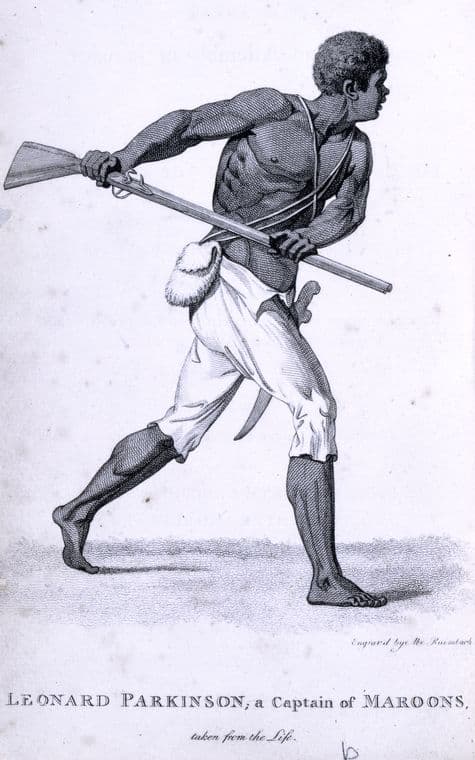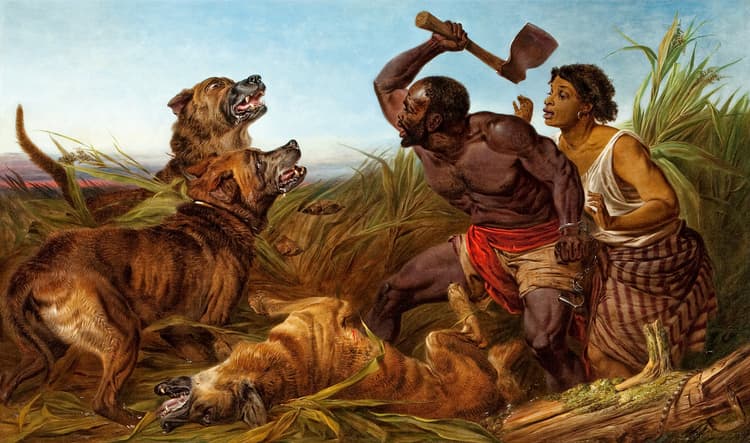Maroon Societies and Autonomous Black Communities
Maya Hall
7 min read
Listen to this study note
Study Guide Overview
This study guide covers Maroon communities and their resistance to slavery and colonialism, including their emergence, characteristics (remote locations, cultural blends, resilience), and key locations. It examines Maroon Wars, highlighting their purposes (protection, treaties, military buffer) and key figures like Bayano and Queen Nanny. The guide also analyzes primary source images of Maroon life and leadership. Finally, it provides exam tips, focusing on high-priority topics, question types, and effective time management strategies.
#AP African American Studies: Maroon Communities & Resistance - The Night Before Review 🚀
Hey! Let's get you prepped and confident for your AP exam tomorrow. We're diving into Maroon communities, their resistance, and the key figures you need to know. Think of this as your ultimate cheat sheet, designed to make everything click. Let's go!
#
Overview: Maroon Communities & Resistance
Maroon communities were self-liberated societies formed by formerly enslaved Africans. They represent a powerful form of resistance against slavery and colonialism. These communities weren't just about escaping; they were about building autonomous lives and cultures. Let's break it down:
#
Emergence and Characteristics
- What: Autonomous communities formed by self-emancipated Africans.
- Where: Remote areas across the African diaspora (Caribbean, Brazil, North America).
- Why: To evade capture and build free societies.
- When: Throughout the era of slavery, with varying lifespans.
#Key Characteristics:
- ⛰️ Remote Locations: Swamps, mountains, forests – places hard to reach.
- 🎭 Cultural Blends: Unique mix of African traditions, languages, and practices.
- 💪 Resilience: Overcame illness, scarcity, and constant threats.
- 🤝 Collective Identity: Strong sense of community and resistance to slavery.
- 🛠️ Diverse Skills: Warriors, craftspeople, farmers, healers – everyone played a role.
#Locations in North America:
- Great Dismal Swamp: Border of Virginia and North Carolina.
- Florida: Alliances with Seminole communities.
- Isolated Southern Regions: South Carolina, Georgia, Louisiana.
#
Palenques and Quilombos
- Palenques: Spanish colonies (Colombia, Cuba, Mexico).
- Quilombos: Brazil (Quilombo dos Palmares is the most famous).
Remember Palenques in Panish colonies and Quilombos in Qrazil.
#
Maroon Wars: The Fight for Freedom
Maroon wars were not just revolts; they were strategic campaigns to protect freedom and negotiate autonomy. These wars highlight the military prowess and political savvy of maroon communities.
#Purposes of Maroon Wars
- 🛡️ Protection of Freedom: Defending their autonomy against colonial forces.
- 🤝 Treaties: Negotiating agreements for self-governance (often in exchange for suppressing other rebellions).
- ⚔️ Military Buffer: Serving as a barrier between colonial forces and enslaved populations.
#Key Figures and Conflicts
#Bayano's Wars vs. Spain
- Who: Led a maroon community in Panama.
- What: Raided Spanish settlements and plantations.
- Outcome: Resisted for years before capture and execution.
#Queen Nanny vs. English
- Who: Legendary female leader in Jamaica.
- Tactics: Guerrilla warfare (ambushes, raids, camouflage).
- Outcome: Negotiated a peace treaty in 1740, securing autonomy for the Windward Maroons.
Remember Bayano in Banama and Nanny in New Jamaica
#Required Sources: Visual Insights
#Leonard Parkinson, a Captain of the Maroons by Abraham Raimbach, 1796

- Significance: Rare visual of Maroon leadership, showcasing African resilience and self-governance.
- Key Point: Challenges the narrative of enslaved people as powerless, highlighting their political and military structures.
#The Maroons in Ambush on the Dromilly Estate in the Parish of Trelawney, Jamaica by J. Bourgoin and J. Merigot, 1801

- Significance: Depicts Maroon guerrilla warfare tactics, emphasizing strategic use of terrain.
- Key Point: Shows the complex dynamics of slave resistance and European anxieties about maroon communities.
#The Hunted Slaves by Richard Ansdell, 1862

- Significance: Vividly portrays the brutal reality of slavery and the pursuit of escaped slaves.
- Key Point: Underscores the constant fear and danger faced by enslaved individuals seeking freedom.
#
Final Exam Focus
-
Highest Priority Topics:
- The formation and characteristics of Maroon communities.
- The causes and consequences of Maroon wars.
- The roles of key figures like Bayano and Queen Nanny.
- Analysis of primary source images.
-
Common Question Types:
- Multiple-choice questions testing knowledge of key terms and events.
- Short answer questions requiring analysis of primary sources.
- Free-response questions asking for comparisons and synthesis of information.
-
Time Management Tips:
- Quickly scan questions and identify key terms.
- Allocate time based on question point values.
- Don't get stuck on one question; move on and come back.
-
Common Pitfalls:
- Confusing maroon communities with slave revolts.
- Overlooking the cultural and political significance of maroon societies.
- Not analyzing primary sources thoroughly.
#Practice Questions
Practice Question
#Multiple Choice Questions
-
Which of the following best describes a key characteristic of Maroon communities? (A) They were primarily located in urban areas. (B) They were solely composed of men. (C) They blended diverse African cultures. (D) They were always short-lived and easily destroyed.
-
What was a primary purpose of Maroon wars? (A) To completely abolish slavery in the Americas. (B) To negotiate treaties that ensured Maroon autonomy. (C) To establish trade routes with European powers. (D) To convert colonial populations to African religions.
-
Who was Queen Nanny? (A) A Spanish colonizer who fought against Maroons. (B) A legendary Maroon leader in Jamaica. (C) A British abolitionist who supported Maroon communities. (D) A Brazilian plantation owner who captured escaped slaves.
#Free Response Question
Analyze the ways in which Maroon communities demonstrated resistance to slavery and colonialism. In your response, consider their geographic locations, cultural practices, and military strategies. Provide specific examples from the text and images to support your claims.
Scoring Breakdown:
- Thesis (1 point): A clear thesis statement that addresses the prompt.
- Geographic Locations (2 points): Explanation of how remote locations aided resistance, with specific examples like the Great Dismal Swamp.
- Cultural Practices (2 points): Discussion of how cultural blending and collective identity fostered resistance, with examples of unique traditions.
- Military Strategies (2 points): Analysis of how guerrilla warfare and strategic alliances helped Maroons resist, with examples of Bayano and Queen Nanny.
- Use of Sources (2 points): Reference to the provided images and texts to support claims.
- Synthesis (1 point): Demonstrates a complex understanding of Maroon resistance by connecting multiple elements.
You've got this! Remember, you're not just memorizing facts; you're understanding the incredible resilience and agency of African people. Go get that 5! 🌟
Continue your learning journey

How are we doing?
Give us your feedback and let us know how we can improve





